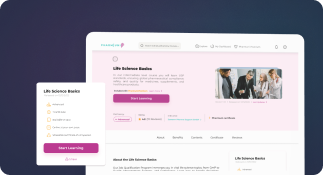Lab-based modeling and data analysis have become essential for pharmaceutical QA/QC professionals. Yet many still confuse key terms like “train,” “validation,” and “test” — especially when applying machine learning to method development or analytical validation. This confusion can lead to inaccurate results, poor model performance, and regulatory non-compliance.
In this article, we answer the most-asked questions around the train validation test process in labs. You’ll learn definitions, procedures, goals, and how to apply these concepts correctly to protect data integrity.

What Does the Train Validation Test Process Mean?
Many lab professionals ask: “What does the train validation test process mean in a lab setting?”
Let’s start with basics. A dataset is usually divided into three parts:
- Training set: builds the model
- Validation set: tunes the model
Test set: assesses final performance
Sign up for Performing Phase of GMP Equipment Qualification Course
5 Reasons to Split Your Data Correctly
Splitting data incorrectly leads to serious issues. Here’s why good practice matters:
Ensures reliable model evaluation
Using the test dataset only once helps avoid inflated results.
Prevents overfitting
Train validation test processes catch early signs of overfitting.
Meets regulatory expectations
GxP labs must separate training and testing for data integrity.
Supports reproducibility
Independent test data validates real-world performance.
Aligns with AI and ML standards
All ML train test frameworks require strict data split procedures.
What Are the Main Objectives of the Train Validation Test Process?
Ensure Model Reliability
First, models must generalize — not memorize. The train validation test framework ensures that. It uses known inputs (training), adjusts tuning (validation), and finally tests the outcome (test). Each step acts as a safeguard against failure.
Align With Regulatory Science
Secondly, the process satisfies data integrity rules like ALCOA+. Regulators expect models to be repeatable, reliable, and separate from biased training data. Without this structure, any model used in method validation becomes non-compliant.
Want to improve your validation procedures?
Enroll in the Laboratory Method Validation – Foundational Course today.

How to Split Train Validation Test Sets: 7 Key Rules
Split before training begins
Lock the test set before writing model code.
Use random and stratified sampling
Keep variable distributions consistent across splits.
Follow time-based splits for trends
In time-series data, split chronologically, not randomly.
Keep test set small but untouched
Use 10–20% of the data for final testing.
Use cross-validation to improve performance
Replace a static validation set with rotating folds.
What Is the Difference Between Train and Validation and Test?
Train vs Validation
The training set teaches your model. The validation set helps you fine-tune it. You use both before testing. Confusing these two creates biased performance estimates and increases regulatory risk.
Validation vs Test
The validation dataset adjusts the model. The test dataset judges it. QA teams must ensure the test data remains unseen until the final step. This helps ensure objective performance reporting.
📘 If you handle method development or system qualification, mastering this distinction is essential.
When Should You Use Cross-Validation?
Cross-validation helps you make the most of small datasets. Instead of using a single validation set, you divide the training data into folds. Then, each fold gets used as a validation set once.
What Is the Best Train Validation Test Ratio?
There is no one-size-fits-all ratio. However, these are the most commonly used train validation test splits:
Large dataset (10,000+ samples)
➤ 70% train
➤ 15% validation
➤ 15% test
Medium dataset (1,000–10,000 samples)
➤ 60% train
➤ 20% validation
➤ 20% test
Small dataset (<1,000 samples)
➤ 70% train
➤ 30% test (with cross-validation instead of a separate validation set)
Conclusion: What You Must Do Now
Now that you understand the train validation test structure, here are your next steps:
- 🔐 Always separate test data from the start
- 🧪 Use validation sets only for tuning
- 🧠 Adopt cross-validation for small datasets
- 📝 Document your data split in your lab records
- 📚 Train your team using Pharmuni’s foundational course
Remember, labs that follow proper train validation test procedures build more trustworthy models, pass audits, and protect patient safety.
Want to elevate your knowledge?
👉 Explore Pharmuni’s Full GMP and Validation Course Catalog
👉 Enroll in the Laboratory Method Validation – Foundational Course now

Ershad Moradi
Ershad Moradi, a Content Marketing Specialist at Zamann Pharma Support, brings 6 years of experience in the pharmaceutical industry. Specializing in pharmaceutical and medical technologies, Ershad is currently focused on expanding his knowledge in marketing and improving communication in the field. Outside of work, Ershad enjoys reading and attending industry related networks to stay up-to-date on the latest advancements. With a passion for continuous learning and growth, Ershad is always looking for new opportunities to enhance his skills and contribute to pharmaceutical industry. Connect with Ershad on Facebook for more information.

Method Validation in Pharma: 5 Steps to Accurate, GMP-Compliant Results in 2025
Method Validation in Pharma proves your analytical results stay accurate and GMP-ready in [year. First, you define scope, risk, and acceptance criteria. Then, you confirm specificity, accuracy, precision, and linearity. Next, you set LOD/LOQ and verify robustness under small method changes. Finally, you document everything for audits and stronger scientific rigor.

CIOMS in Pharmacovigilance: A Complete 2025 Guide
CIOMS guidelines help pharmacovigilance teams report, assess, and share safety data consistently. They support clear case processing, signal detection, and periodic reporting across regions. Use CIOMS forms and standards to reduce errors, align with regulators, and improve patient safety decisions.

Market Access Pharma Courses: Skills, Frameworks & Real-World Applications (2025 Guide)
Market access decides whether patients can actually get a medicine. So, it blends value evidence, pricing logic, reimbursement, and stakeholder alignment. In this blog, you will learn the core market access skills, the main frameworks used in pharma, and how teams apply them in real launches. You will also see how HEOR, payer needs, and local policy rules shape access decisions. Finally, you will learn how structured Market Access Pharma Courses turn theory into practical, job-ready capability.




